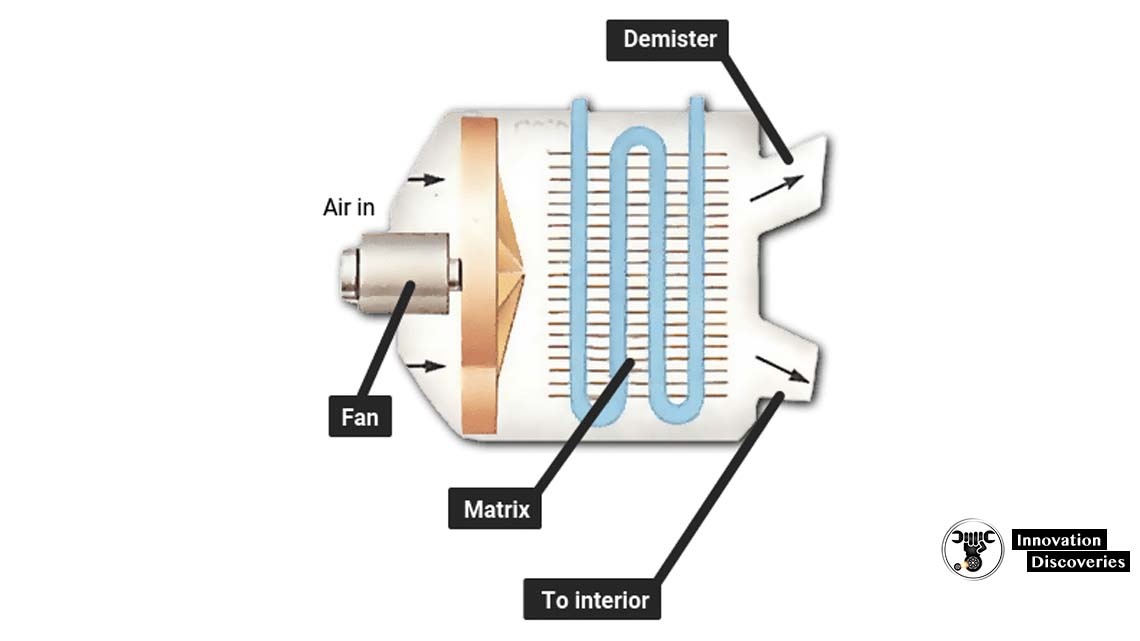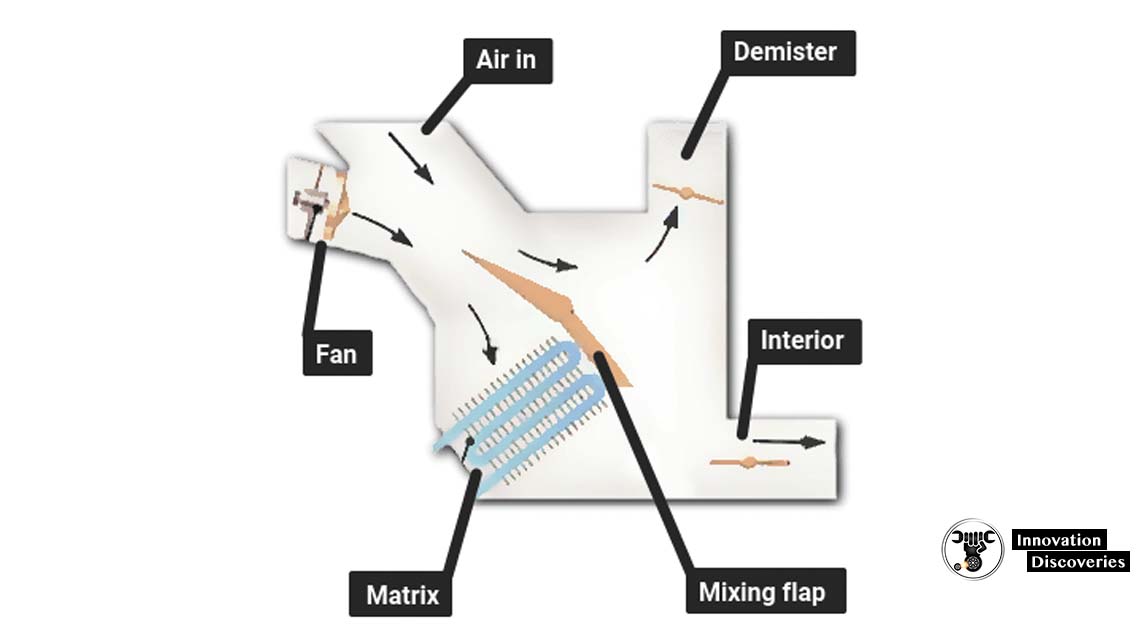Modern cars are designed to have a constant through-flow of fresh air, that keeps the interior atmosphere pleasant even with all the windows shut.
The incoming air can be heated by the engine to keep the windows clear of mist and the car interior at a chosen temperature.
A typical heating system

A modern car has a ventilation system, That provides a constant through flow of fresh air, Heated if necessary.
Airflow
Air enters a large duct at the front of the car, Placed so that when the car is moving the entry point is in a high-pressure area and air is forced in.
From there it goes to the heater, which warms it if required.
Another common entry point is through grilles on top of the bonnet.
Air enters the car interior through the front foot-wells and through vents on the dashboard.
The vents can be adjusted to point at the faces of the front-seat occupants.
Some cars also have ducts to the rear-seat area.
Slots in the ledge at the bottom of the windscreen – and, in later cars, By the front side-windows allow a stream of warm air to be, Blown on to the glass to prevent misting.
On later cars, All the entry points have flaps for opening and closing them as needed.
At the rear, there are exit vents to the outside.
They are in an area of low pressure when the car is moving, and so extract air, Go Pro For More HighlightsThus giving a constant through-flow.
The heater
In a water-cooled car, the heater casing contains a matrix – a small radiator.
That takes hot water from the engine through a hose.
Incoming air goes through the water-heated matrix and is warmed.
There is also an electric fan, Which can be switched on to blow air through the system when the car is stationary or when extra ventilation is called for.
The fan can be adjusted to run at different speeds, according to need.
The temperature to which the air is warmed is controlled by either a water valve or an air-blending system.
The water-valve type is found mainly on earlier cars.
The temperature control on the dashboard works a tap Which lets either more or less hot water through the matrix.
The setting is slow to respond to change and difficult to regulate exactly.
The air-blending system has a matrix that is heated constantly.
The temperature control opens and closes flaps that blend heated air with cold air from outside.
With either system, there may be extra flaps to admit a separate supply of cold air to the face vents, Even when the rest of the system is supplying warm air.
The air-control flaps inside the heater box may be moved mechanically by Sliding knobs on the control panel, which are linked to the flaps by cables.
More expensive cars may have power-assisted controls worked by the vacuum in the inlet manifold acting on a diaphragm, As in a power- brake servo
Two methods of heat control
- Water-valve heating system

In a heater worked by a water valve, All the air goes through the matrix.
The matrix temperature is controlled by Regulating the amount of hot water going through it. Water-valve heating system
- Air-blending heating system

In an air-blending heater, The matrix is at a constant temperature, Warm air from it is mixed with cool air as Temperature-controlled flaps open and close.
Air-cooled cars
In cars with air-cooled engines, Air for the interior heater can be warmed by ducting it around fins on the hot exhaust manifold.
The warmed air is mixed to the right temperature by an air-blending system, Including a heat-sensitive valve that keeps the temperature steady and at a comfortable level for the occupants.
If necessary, the air may be warmed further by an electrically ignited petrol-burning heat exchanger.
Also, read –
- Heat exchanger and types of heat exchanger?
- What are Main Components of Gear Box?
- Difference between Drum Brake and Disc Brake
- What is Automobile Injector and its Types




3 Comments